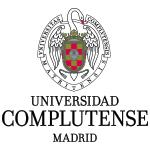Shedding of cephalosporin resistant Escherichia coli in pigs from conventional farms after early treatment with antimicrobials
Artículo de investigación publicado en The Veterinary Journal
1 de mayo de 2016
This study assessed the dynamics of cephalosporin resistant (CR) E. coli populations during the life cycle of pigs treated early in life with ceftiofur or tulathromycin. The study was conducted at eight conventional pig farms; four for each treatment with ceftiofur or tulathromycin. At each farm, 70 7-day-old piglets were divided into two groups: a control group (n = 30) and a treatment group (n = 40). Faecal samples were collected on day 0 and on days 2, 7 and 180 post-treatment. Sows were also sampled on day 0. CR E. coli were selected on MacConkey agar with ceftriaxone. On five farms, 7-day-old piglets excreted CR E. coli before treatment associated with the presence of CR E. coli in sows. The occurrence of CR E. coli positive animals decreased with increasing piglet age. The remaining three farms tested negative for CR E. coli during the study period. Results demonstrated great variability in the frequency of CR E. coli positive animals between farms, independent of treatment. Treatment with ceftiofur resulted in a transitory increase in the counts of CR E. coli after 48 h. However, other risk factors including the presence of CR E. coli in sows and animal age were more important than antimicrobial treatment. Accordingly, intervention strategies targeting sows would likely have a beneficial effect in reducing the occurrence of antimicrobial resistance in primary pig production
Cameron-Veas K., Moreno MA., Fraile L. y Migura-Garcia L.
| Centre de Recerca en Sanitat Animal (CReSA). Universitat Autònoma de Barcelona (UAB). | |
| Instituto de Investigación y Tecnología Agroalimentarias (IRTA). Generalitat de Catalunya. | |
 | Servicio de Zoonosis de Transmisión Alimentaria y Resistencia a Antimicrobianos (ZTA). Centro de Vigilancia Sanitaria Veterinaria (VISAVET). Universidad Complutense (UCM). |
 | Departamento de Sanidad Animal. Facultad de Veterinaria. Universidad Complutense (UCM). |
| Universitat de Lleida. | |
